10 August, 2023

Are You Looking For a
Web Devlopement | App Devlopement
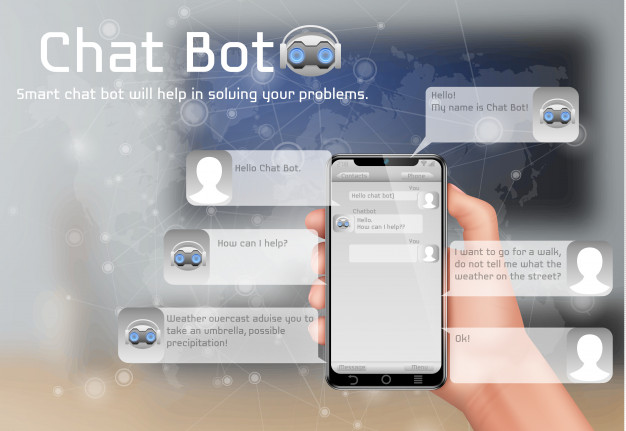
How Bots Are Changing the World: A blog about Artificial Intelligence and bots for text messaging.
What is a chatbot?
A chatbot is an artificial intelligence (AI) program that can simulate a conversation (or a chat) with a user in natural language through messaging applications, websites, mobile applications or by phone.

An example , you wish to shop for some shoes from your local sales outlet, you have to access their website, find what you're searching for and buy it. But what if that store had a bot? it would only be necessary to write down a message to the brand through Facebook and tell them what we would like . And if you had doubts about size measurements you'll gt answers to your problem during a moment.
One of the good advantages of chatbots is that, unlike applications, they're not downloaded, it's not necessary to update them and that they don't take up space within the phone's memory. Another one is that we will have several bots integrated within the same chat.
This way we might avoid jumping from one app to a different consistent with what we'd like at each moment. The consequences? More pleasant user experiences and faster and simpler customer service interactions.
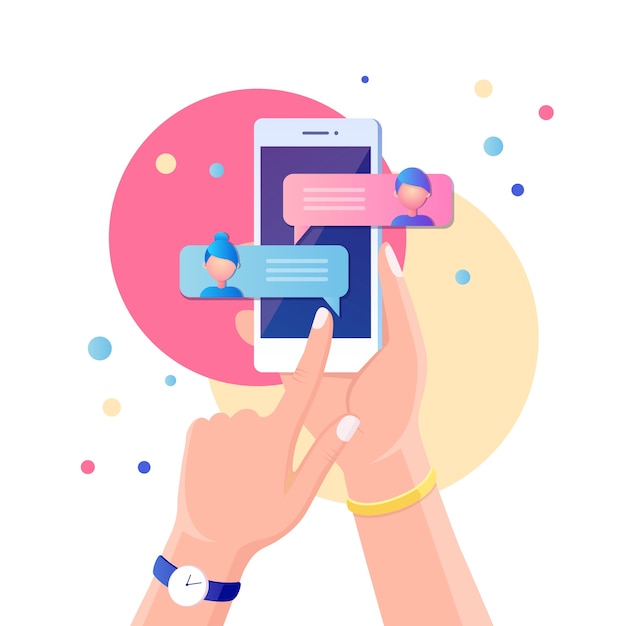
Why are chatbots important?
Chatbot apps enhance customer experience by streamlining communications between people and services. At the same time, by lowering the typical cost of customer care, they provide businesses with new ways to increase customer loyalty and operational performance.
A chatbot solution must be capable of performing tasks efficiently in order to be efficient. Human support is critical here: regardless of the solution or platform used, human involvement is required to configure, train, and optimize the chatbot framework.
What are the objectives of chatbots? How do companies make more use them?
The rapid advancement of I.A. in the last decade has resulted in an increase in company adoption of these robots.Conversational bots have been adopted by major corporations such as Skype, Telegram, and Facebook, as well as a large number of start-ups, providing excellent customer service support.
The main usages for chatbots are:
- Customer service - As you would imagine, they're used to conduct customer service functions in social networks, applications, and websites in the vast majority of cases.They will take down registration information, provide information, and address frequently asked questions, among other things. By improving the engagement of current and potential customers they make interactions with services faster and simpler, generating better experiences for the user.
- Management of online orders and payments – Chatbots aid in the streamlining of online shopping and payment procedures. Throughout the purchasing decision process, they provide knowledge and solve problems for consumers. They can also conduct searches, recommend similar items, and accept payments directly from the conversation chat. More information about chatbots for payment management can be found at chatbots for payment management.

- Generate and qualify leads - A chatbot can be configured to gather important user information including email and phone numbers and send it to sales reps so they can follow up on the conversation. Then, by asking questions and analyzing answers, you can filter and qualify potential customers, sending only the most important leads to your sales team.
- Improve engagement and build confidence - Creating a trusting atmosphere between your company and potential customers is crucial, and a chatbot will assist you in this endeavour.Chatbots reflect your devotion to the customer experience.
- Assistant 24 hours a day, 7 days a week - One of the most appealing aspects is that, since they are designed to perform specific tasks within a digital medium, they are available 24 hours a day, seven days a week. A single chatbot may respond to multiple users at the same time.
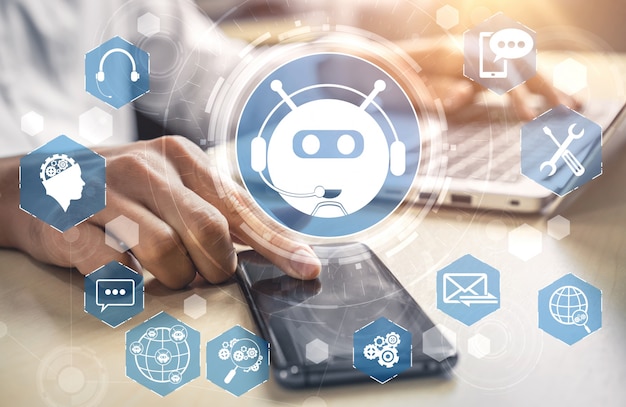
Types of Chatbots :
Here are the three most popular chatbots being designed from a business standpoint:
Support chatbots - Support chatbots are built to master a single domain, like knowledge about a company. Support chatbots need to have personality, multi-turn capability, and context awareness. They should be able to walk a user through any major business processes, and answer a wide range of FAQ-type questions. You will want to have a short-tail and long-tail combo solution when building this type of chatbot
Skills chatbots - Skills chatbots are typically more single-turn-type bots that do not require a lot of contextual awareness. They have set commands that are intended to make life easier: “Turn on my living room lights,” for example. Speech functionality is recommended for this type of chatbot so the user does not need to turn on a device or click any buttons. They should be able to follow commands quickly, so that your users can multitask while engaging with the bot. These chatbots do not need to worry too much about contextual awareness, unless you want to design a particularly advanced one, as people will quickly learn what to say, and say it appropriately. It’s a nice bonus if you can give a command, and your bot knows – to return to our example – that you are in the kitchen and acts to turn on the correct lights.

Assistant chatbots - Assistant chatbots are more or less a middle ground between the two bots above. They work best when they know a little bit about a variety of topics. Many people envision these bots will someday become navigators of all other bots that are out there now. Want to pay a bill? Ask your assistant bot to talk to the support bot for your bank. Assistant chatbots need to be conversational and respond to just about anything, while being as entertaining as possible. Siri is a good, current example – while she only does so much, people continually ask her for things simply because even when she cannot perform the command, the response she gives tends to be amusing. When building an assistant chatbot, it is important to make it as obvious as possible how the bot is trained. The range of questions a user might ask is large, so making sure you have adequate coverage is going to be the most difficult factor. In many cases, when people do not know what they should ask, they will not ask anything at all. And if you miss the few topics they initially are willing to try, they will not come back for more.
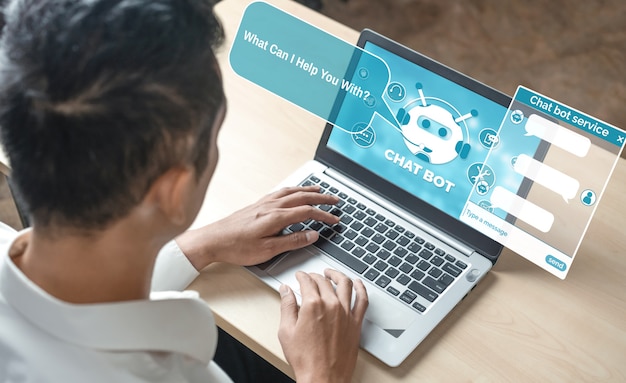
Artificial Intelligence and bots for text messaging :
The role of chatbots in making your brand more open and impactful is well-known. AI chatbots will assist your customers and, as a result, your company in a number of ways, including calling a customer service agent, reporting problems to help, creating a lead to contact later, ordering goods and services, and much more.
Business applications of chatbots for consumer-facing goods are growing rapidly. In fact, over 59% of millennials and 60% of Gen Xers in the United States have interacted with chatbots. And according to a Facebook survey, more than 50% of customers say they’re more likely to shop with a business that they can connect with via chat.
According to Gartner,
“By 2020, 85% of our engagement with businesses will be done without interacting with another human. Instead, we’ll be using self-service options and chatbots.”
Additionally, according to an Oracle survey,
“80% of businesses said they currently use or are planning to use chatbots by 2020.”

Customers expect to be able to find the information they’re looking for in a click of a button and in the blink of an eye.When this isn’t possible, frustration brews, and this can lead to you losing a sale or even losing a potential customer forever.To understand how chatbots can mitigate some of these frustrations and improve the user experience, we need to first look at how customers are choosing to interact with businesses today.In the 2017 Global State of Customer Service Report by Microsoft, we can see how email and telephone are still the dominant communication channels for many customers.And while live chat, self-service, social media, and chatbots are relatively lower in terms of raw volume, the growth of these channels are staggering.
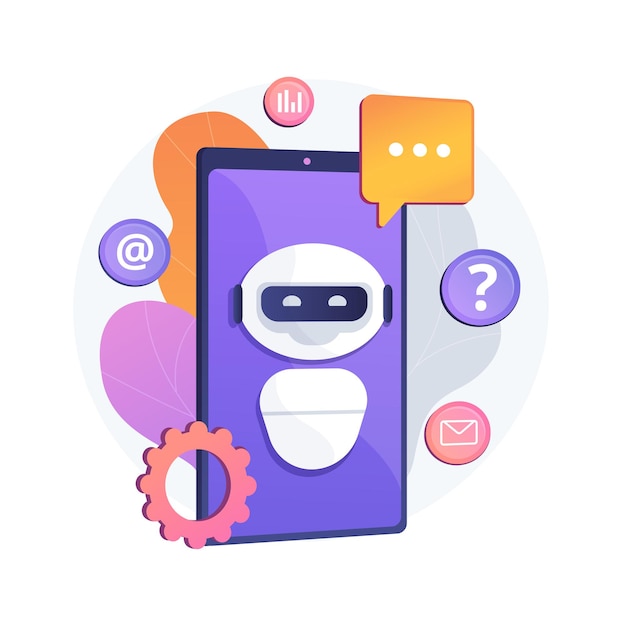
So Directly or indirectly chatbots are more user friendly andeven customers and its users like to use chatbot then any other medium just because the user friendly working of these bots . And hence bots are changing the world by their user friendly interface and by the Artificial Intelligence they are making users more easier .
Follow Us - Instagram , Twitter





.jpg)
